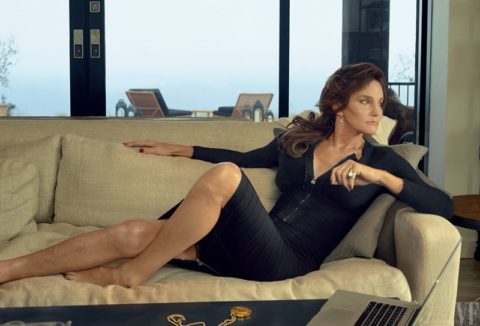Is 2015 the year we finally get rid of unrealistic beauty standards?

As far back as we can remember (and even before), women have been expected to look a certain way. We know that for centuries, women wore corsets to create an over-exaggerated waist. In the 1950s, women were encouraged to put weight on as the bombshell silhouette dictated body norms. Twiggy changed the game in the 1960s with her small, curve-free figure, and by the 1980s, women were expected to look like the supermodels of the day: tall, leggy, curvy, tanned, and thin.
For years, these standards have acted as a dictatorship, forcing women to abide by conventions created only to sell makeup, clothes, and other grooming accessories. Being thin wasn’t enough, you needed big breasts. Being tall wasn’t enough, you needed to be body hair-free. Then when we began “celebrating” curves (read: hanging mass marketing campaigns on them), we still saw red carpet correspondents asking actresses how they “fit into that dress.” And all of it sent the same, tired message: the only way to look is the way we’re told to.
But slowly, we’re seeing a shift. Earlier this year, French parliament debated weight standards for fashion models, and last week an YSL ad was banned in the UK because the model was too thin. In January, Tess Holliday — creator of the #EffYourBeautyStandards campaign — became the first-ever plus-size model of her weight and height to be signed to a major agency, and she recently appeared on the cover of People (where she gave an interview as inspiring as it was overdue). And weight isn’t the only thing that’s experiencing a revolution.
Following Caitlyn Jenner’s debut in Vanity Fair this week, rumours abounded that she’ll be the new face of M.A.C — which is especially exciting since in April, transgender model Andreja Pejic was named the new face of Make Up For Ever. Suddenly (and by “suddenly” I mean not at all, it just took the industries a while to figure it out), beauty isn’t as limited to gender norms. Or, the industry’s definition of beauty is evolving, with Pejic herself reminding us that there’s a long way to go.
“I think things are changing rapidly and it just falls into the sphere of diversity, doesn’t it?” she said to Fashionista. “Obviously fashion is starting to reflect the world a lot more. I think the same point that you can make for racially diverse models is the same point you can make for transgender models. So although I would say we’re a little bit behind, I think there’s great potential now.”
Ultimately, that’s the key: thanks to social media campaigns like #EffYourBeautyStandards, #AskHerMore, and #NotBuyingIt, discussions, and the willingness for women like Jenner or Holliday to be unapologetically themselves, there’s finally the potential for a beauty revolution. But we’re still in the early stages: as of 2014, New York Fashion Week was overwhelmingly white, with less than 25% of all models who walked being women of colour. Because very upsettingly, beauty standards are still very much, “look and be white.” And we still subjected Caitlyn Jenner to the objectification our society reserves for all women upon seeing the way she looked.
So there is still a lot of work to be done.
But at the same time, the work that is happening is slowly heeding results. At New York Fashion Week this February, designer Carrie Hammer held Role Models Not Runway Models, a show that featured real women who wore her clothes (like actress Jamie Brewer), and this week, Madeline Stuart, an 18-year-old aspiring model with Down’s Syndrome, was flooded with offers after telling her story. Sites like Amy Poehler’s Smart Girls at the Party and Rookie have offered countless pieces reminding that beauty isn’t about somebody else’s rules (like this recent piece on body hair), and Laverne Cox reminded everybody on Tumblr this week that to hang one’s worth on beauty alone is a mistake.
Of course, these triumphs, discussions, and pieces don’t tell us conventional beauty standards are over, but they do give us hope that they soon will be. As women of the 21st century, we know that beauty goes beyond the physical scope and that limiting it to what we’re being sold is doing us all a disservice. It’s impossible to look a certain way. It’s impossible to come in at a certain weight. It’s impossible to assimilate every woman on the planet, because it’s our eccentricities and uniqueness that us great. Beauty shouldn’t be a rulebook — its meaning should change for every person. Fortunately, we seem to be tearing out the pages of that existing rulebook, one by one, and hopefully ending up in a place where beauty’s only definition is “whatever makes you feel powerful.”







